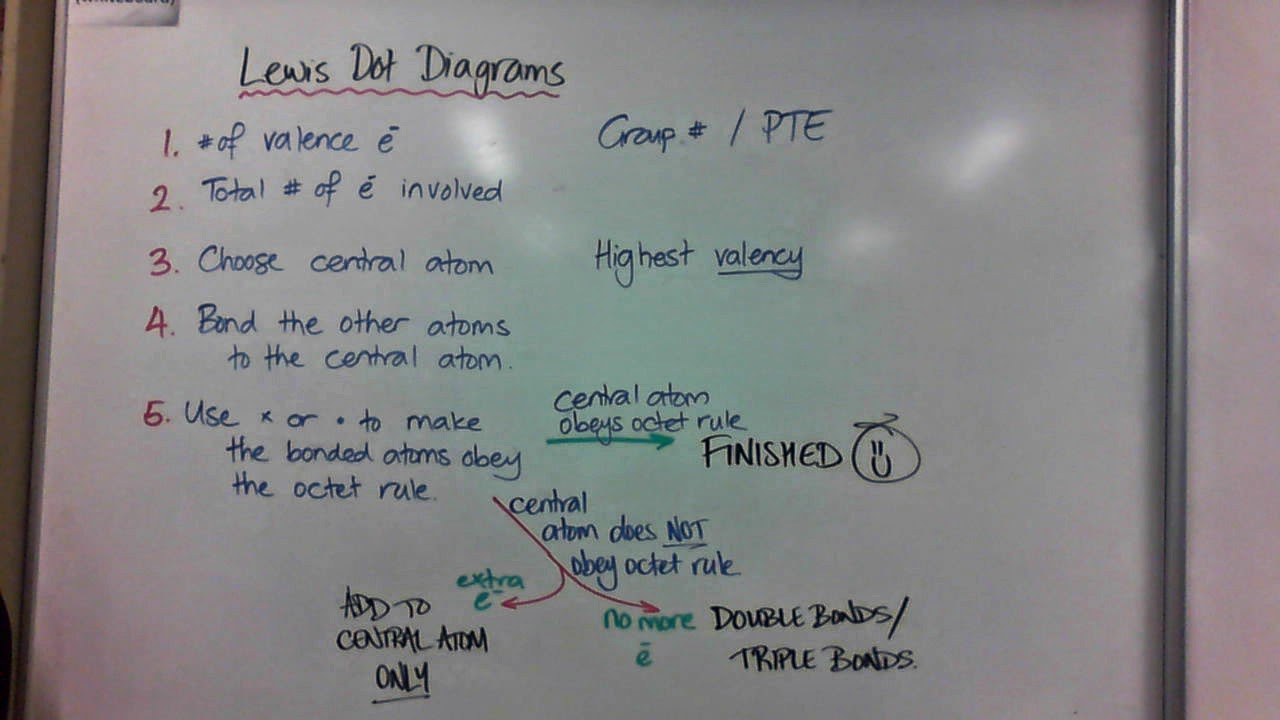This is only slightly more complicated due to the molecules/ions with 5 (or 6) regions of electron density around the central atom.
Friday, 30 May 2014
Wednesday, 28 May 2014
Shapes of Molecules
Friday, 23 May 2014
Lewis Dot Diagrams
We started with a recap of Level 2 Chemistry:
Then, we learned about some examples which break the Octet Rule:
Then, we learned about some examples which break the Octet Rule:
Finally, we learned about how to do Lewis Dot Diagrams for polyatomic ions:
Today was #PinkShirtDay in NZ; a day to raise awareness of, and express intolerance for bullying. #StopBullying
Thursday, 22 May 2014
Electronegativity
Today was primarily a recap of Level 2 work. However, as well as knowing how to use E.N. to predict bond type, we also need to remember two trends and to justify them using our knowledge of atomic structure.
Below is the video of the key considerations being summarised for the class in 2013:
Below is the video of the key considerations being summarised for the class in 2013:
Friday, 16 May 2014
Transition Metals
Transition metals have some characteristic properties. We need to be able to explain these in terms of their atomic structure (radius and/or electron configuration).
Thursday, 15 May 2014
Ionisation Energy
Ionisation Energies are often used as further evidence to determine the structure of atoms, particularly their electron configurations. Trends in 1st Ionisation Energies also tell us a lot about the different orbitals and their relative distances from the nucleus.
Tuesday, 13 May 2014
Electron Configurations
The Bohr Model was useful in explaining the properties of the first 20 elements but falls down beyond Calcium. To understand the properties of the transition metals and other elements up to Krypton (36), we need to understand s, p and d orbitals.
- s orbitals can hold up to two electrons
- p orbitals can hold up to six electrons in 3 sub-orbitals
- d orbitals can hold up to ten electrons in 5 sub-orbitals
The next thing to get our heads around is how to write the electron configurations for ions. We came up with the "penguin" theory (thanks Bronwyn!!). The penguins on the edge of the ice-pack get taken away by the seals first... The electrons farthest from the nucleus are removed first when cations are formed.
For homework, we have to write the electron configurations for:
- copper (II)
- iron (II)
- iron (III)
- zinc
We also have to infer why zinc ions form colourless/white compounds.
Monday, 12 May 2014
Planning Ahead
The image below shows a brief overview of what we will be covering in the next few weeks, and a more detailed plan of what content will be covered in the first few lessons:
Friday, 9 May 2014
Atomic and Ionic Radius
We started today by revisiting the Bohr Model of the atom, as it can be used to explain trends in atomic and ionic radii.
We are expected to be able to answer all of these types of questions before we move onto the next concept.
Subscribe to:
Comments (Atom)















